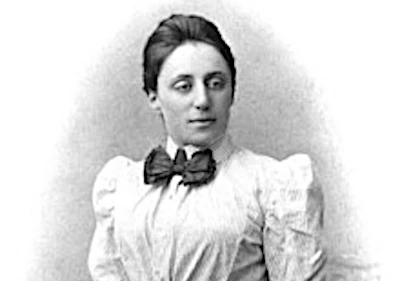
Born on March 23, 1882 in Erlangen, Germany, Amalie Emmy Noether (1882-1935) grew up in a family of mathematicians. Her father, Max Noether (1844-1921), was a renowned mathematics professor. Although women were then excluded from university studies in Germany, she obtained special permission to attend courses at the University of Erlangen.
After earning her doctorate in 1907 under the supervision of Paul Gordan (1837-1912) with a thesis on invariants, she worked without pay at the Mathematical Institute of Erlangen for 7 years.
In 1915, she was invited to Göttingen by David Hilbert (1862-1943) and Felix Klein (1849-1925) to work on the theory of general relativity. Despite opposition from some colleagues, she finally obtained the right to teach in 1919, becoming the first female tenured professor in Germany.
In 1918, Noether published her fundamental theorem which establishes a deep connection between:
This theorem, which Albert Einstein (1879-1955) called a "monument of mathematical thought," became a pillar of modern theoretical physics. It explains why:
Noether also revolutionized algebra with her work on:
Her concepts laid the foundations of modern algebra and still influence fields like algebraic topology and algebraic geometry today.
In 1933, due to her Jewish origins, Noether was expelled from the University of Göttingen by the Nazis. She emigrated to the United States where she obtained a position at Bryn Mawr College in Pennsylvania.
Despite the difficulties, she continued her research and trained a new generation of mathematicians. She died prematurely in 1935 from complications of surgery, at only 53 years old.
Today, Emmy Noether is considered one of the most important mathematicians in history. Her legacy includes:
Many prizes and institutions bear her name, and she is often cited as an example of scientific genius who overcame the discriminations of her time.
| Contribution | Year | Field | Impact |
|---|---|---|---|
| Noether's Theorem | 1918 | Theoretical physics | Fundamental link between symmetries and conservation laws |
| Ideal Theory | 1921 | Abstract algebra | Foundation of modern commutative algebra |
| Noetherian Ring Theory | 1926 | Algebra | Classification of algebraic structures |
| Module Theory | 1929 | Algebra | Generalization of vector spaces |
| Applications in Topology | 1930-1935 | Topology | Link between algebra and geometry |